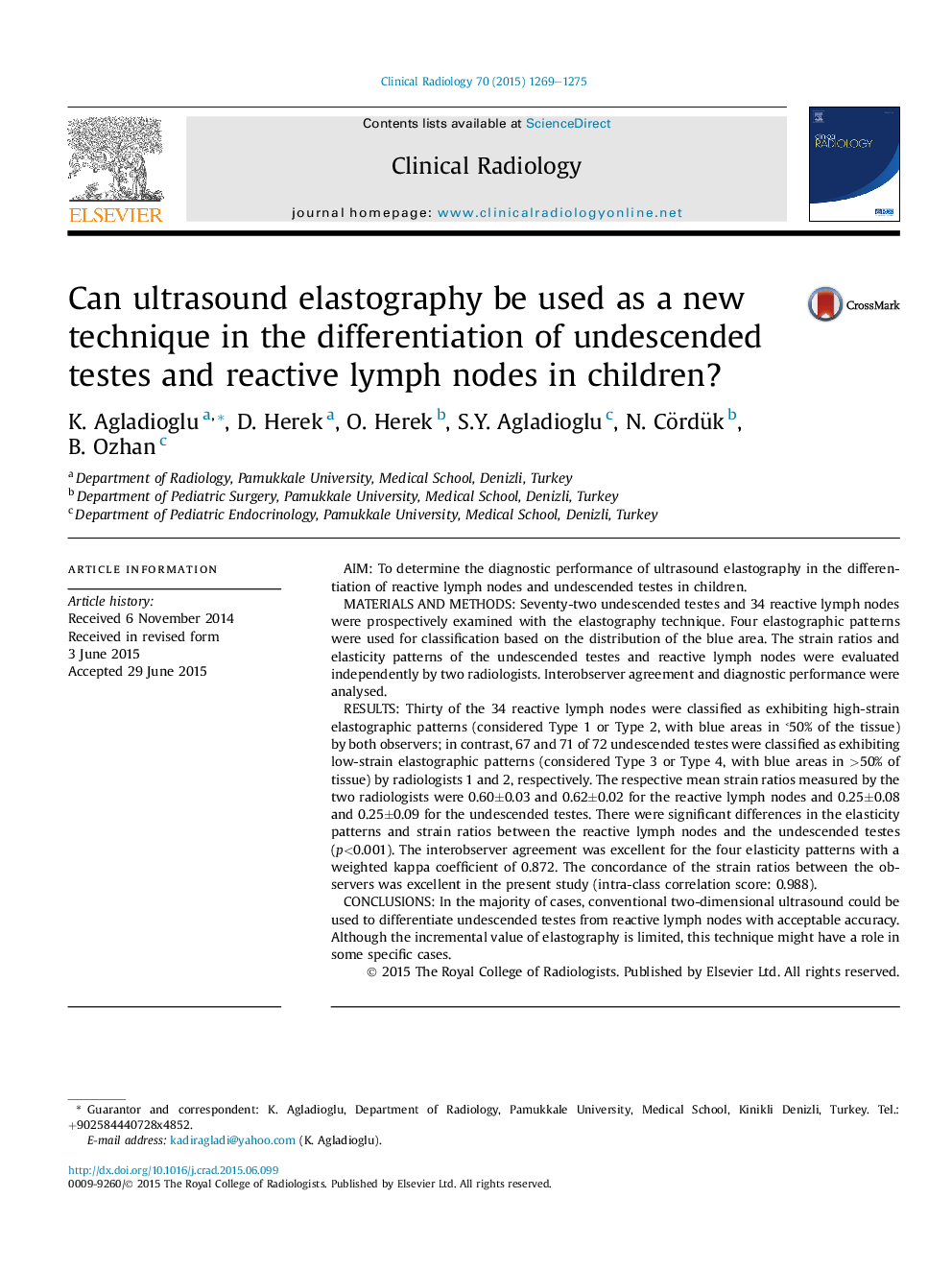| Article ID | Journal | Published Year | Pages | File Type |
|---|---|---|---|---|
| 6190766 | Clinical Radiology | 2015 | 7 Pages |
â¢The objective of this study was to determine the diagnostic performance of ultrasound elastography in the differentiation of reactive lymph nodes and undescended testes in children.â¢Seventy-two undescended testes and 34 reactive lymph nodes were prospectively examined.â¢There were significant differences in the elasticity patterns and strain ratios of the reactive lymph nodes and undescended testes (p<0.001).â¢Ultrasound elastography could be useful for differentiating reactive lymph nodes from undescended testes.
AimTo determine the diagnostic performance of ultrasound elastography in the differentiation of reactive lymph nodes and undescended testes in children.Materials and methodsSeventy-two undescended testes and 34 reactive lymph nodes were prospectively examined with the elastography technique. Four elastographic patterns were used for classification based on the distribution of the blue area. The strain ratios and elasticity patterns of the undescended testes and reactive lymph nodes were evaluated independently by two radiologists. Interobserver agreement and diagnostic performance were analysed.ResultsThirty of the 34 reactive lymph nodes were classified as exhibiting high-strain elastographic patterns (considered Type 1 or Type 2, with blue areas in Ë50% of the tissue) by both observers; in contrast, 67 and 71 of 72 undescended testes were classified as exhibiting low-strain elastographic patterns (considered Type 3 or Type 4, with blue areas in >50% of tissue) by radiologists 1 and 2, respectively. The respective mean strain ratios measured by the two radiologists were 0.60±0.03 and 0.62±0.02 for the reactive lymph nodes and 0.25±0.08 and 0.25±0.09 for the undescended testes. There were significant differences in the elasticity patterns and strain ratios between the reactive lymph nodes and the undescended testes (p<0.001). The interobserver agreement was excellent for the four elasticity patterns with a weighted kappa coefficient of 0.872. The concordance of the strain ratios between the observers was excellent in the present study (intra-class correlation score: 0.988).ConclusionsIn the majority of cases, conventional two-dimensional ultrasound could be used to differentiate undescended testes from reactive lymph nodes with acceptable accuracy. Although the incremental value of elastography is limited, this technique might have a role in some specific cases.
